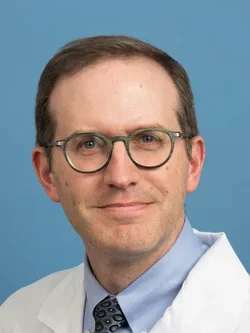Mitochondria & Aging
Mitochondria And Aging
The Single Largest Risk Factor
Researchers have long suspected that aging depends, in part, on metabolism. UCLA research has found that efficient cell operation – specifically in the mitochondria, or energy engines of the cells – might be behind this relationship.
At UCLA, researchers have also shown that aging (and many of the disorders associated with aging) involves insufficient mitochondrial quality control – meaning these minute power plants cannot adequately repair themselves when needed.
Muscle Cells and Mitochondria
Individuals 65 and older are the fastest growing segment of the American population. In 2016, about 11,000 people a day turned 70. What if, as we age, there were treatments to help us keep muscle mass and not lose functional ability as early. Clinicians at UCLA know that age is one of the most important contributing risk factors in disease. On the other hand, researchers at UCLA know that age is a modifiable risk factor in animal models with certain things like caloric restriction and drug therapies.
An important contributing investigator in this area is Jonathan Wanagat, MD, PhD., whose work has primarily been focused on why individuals lose muscle mass or muscle strength as they age.
Wanagat is a practicing Geriatrician at UCLA Health, and the concerns of his patients help to drive his passion for understanding why we lose muscle mass as we age, and how mitochondria and metabolism come into play.
One explanation he and his colleagues have identified are mitochondrial mutations, known as deletion mutations. Much of his previous work has been dedicated to demonstrating that these deletion mutations cause muscle fiber loss. As that work has progressed, they are also focusing on gaining a better understanding of the mutation process with the hope of finding a way to prevent the mutations from happening, accumulating, and ultimately killing the muscle fiber.
Wanagat has been focused on the mitochondria for 24 years and for him, “many roads that lead to the phenomena in aging go through the mitochondria. Whether it’s mutations, autophagy, metabolism, ROS production, or fat metabolism - you name it - for me the part I’m always interested in are the parts that touch mitochondrial biology.”
“ ”
An expedited process
Wanagat and his colleagues have been working to develop protocols to do minimally invasive human muscle biopsies so that now they can start answering some of their questions using human tissue rather than these model organisms. They believe that the ability to have a bank of human tissues to compare discoveries made in model organisms will allow for an expedited process. For example, currently, when a discovery is made in yeast, worm tissue, or even in flies, that target is followed down a path that could take several years before it is compared with a human muscle sample.
With a bank of human muscle tissues readily available, a scientist would be able to quickly compare the analogous model organism sample to see if it is responding in the same way with age, exercise, or another modifier. That would greatly close the time gap on knowing what might be translatable or not. If it is modulated by age or exercise in the same way - that would make a more compelling case for following that compound, finding a drug that targets it, and then bringing that drug all the way to the patient.

Molecular regulation of longevity
Researchers know that calorie restriction in lab mice leads to longer life. Calorie-restricted mice avoid common aging disorders, such as heart disease and diabetes. Investigators theorize that too many calories overtax mitochondria, which have to burn the nutrients. Taking in fewer calories leads to fewer breakdowns in the generators. Actually demonstrating that substantial and sustained calorie restriction leads to longer life in humans hasn’t been easy.
But there may be a better way to lengthen life than through a starvation diet, says Jing Huang, PhD, a professor in UCLA’s department of molecular and medical pharmacology. She has found that – in tiny worms, at least – it is possible to molecularly regulate longevity without calorie restriction. In other words, a naturally occurring molecule may make it possible for us to have our cake, in the form of a long and healthy life, and eat it, too.
Inflamation and Metabolic Regulation of longevity

Inflammation plays a key role in metbaolic health and disease state of aging. Researchers are trying to better understand its role in aging. Dr. Covarrubias is a macrophage biologist with expertise in immuno-metabolism, and how inflammation and metabolism are integrated to regulate metabolic health and disease states including aging. Dr. Covarrubias identified the nutrient-sensing Akt-mTORC1 pathway as a critical regulator of macrophage polarization. He also showed that activation of the Akt target ACLY catalyzes the increase in macrophage cytosolic/nuclear pools of acetyl-CoA. These findings suggest how nutrient and metabolic status can fine-tune macrophage function via nutrient sensing pathways.
Dr. Covarrubias’ recent work is focused on how diet and aging-related inflammation impacts the aging process. In a recent manuscript he showed that the decline of NAD+ during aging is driven by the activation of tissue resident macrophages via senescent cells. As senescent cells progressively accumulate in aging tissues, these results highlight a new causal link between visceral tissue senescence, NAD+, and immuno-metabolic dysregulation during aging, an active area of investigation in the Covarrubias Lab at UCLA.
A tune-up for mitochondria
Researchers suspect that super-efficient mitochondria age their hosts much more gracefully. Huang reasoned that because metabolism helps control aging, compounds produced in cells by metabolic reactions, known as metabolites, might be manipulated to prolong life. To conduct her research, Huang and her lab invented a new technology, Drug Affinity Responsive Target Stability (DARTS), which identifies small molecules that bind to, and therefore interact with, other small molecules. The DARTS technique can quickly identify drug targets. In this case, Huang wanted to see what would bind to the metabolite α-ketoglutarate (α-KG), part of the cell’s energy-generating machinery.
Slowing aging with α-ketoglutarate
α-KG is an important biological molecule involved in the Krebs cycle, the chemical reactions involved in a cell’s production of energy. Huang’s team found that α-KG can slow aging because α-KG binds to ATP synthase in the cell’s mitochondria. ATP synthase is the heart of the Krebs cycle. It is the machinery in the membrane of mitochondria that generates ATP, the cell’s energy currency. In short, ATP synthase turns the food we eat into the energy that powers life. For her experiments, Huang studies Caenorhabditis elegans (C. elegans), a tiny nematode used in longevity research. ATP synthase is 100 percent identical among humans, mice and C. elegans.
In May 2014, Huang reported in the journal Nature that giving her worms extra α-KG inhibited energy production by about one-third.
This “drug”:
- Inhibited production of ATP synthase, mimicking the effects of severe calorie restriction.
- Produced worms that not only had a longer lifespan but also a longer health span because they used energy very efficiently.
- Produced mitochondria that effectively ran on 100-miles-per-gallon fuel, Huang says -- powering a very efficient clean machine that ran for a very long time.
The future of mitochondria and aging
Huang has already found other metabolites that inhibit ATP production, most of which are easier to use than α-KG. Giving mice these drugs in water also inhibited production of cataracts and prevented hair loss. She also has found a different metabolite, 2-HG, that cuts energy use in glioblastoma, the most virulent of brain cancers. Future research in this area offers potential for better understanding of the molecular mechanisms of aging regulation. It also may help doctors prevent and treat common age-related diseases, such as cancer, heart disease, diabetes and neurodegenerative disorders.
